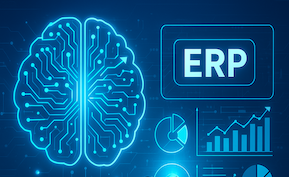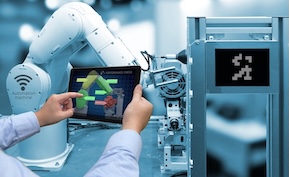Beyond RPA: Why the Future of Automation Is Cognitive
Automation is entering a new era. Traditional robotic process automation (RPA) has delivered efficiency by replicating repetitive human tasks, but it struggles when processes require judgment, interpretation, or adaptation. Cognitive automation changes that. By combining artificial intelligence, machine learning, and natural language understanding, it enables systems that learn, reason, and make decisions in real time—moving automation far beyond simple task execution.
The limits of traditional RPA
RPA was designed to follow rules. It performs structured, repeatable tasks like data entry, invoice matching, and form filling. However, when information changes or exceptions occur, bots often fail, requiring manual intervention. As business processes become more dynamic and data sources more diverse, static rule-based automation can no longer keep up with real-world complexity.
What makes automation cognitive
Cognitive automation integrates AI technologies that allow systems to understand, learn, and adapt. Natural language processing lets bots read emails or interpret unstructured documents. Machine learning helps them detect anomalies and predict outcomes. Computer vision enables the interpretation of images or video feeds. Together, these capabilities empower organizations to automate processes that were once considered too complex or variable for traditional RPA.
How cognitive automation transforms business
Enterprises are using cognitive automation to achieve new levels of speed and accuracy. Finance departments automate reconciliations and fraud detection. Customer service teams use AI-driven bots to analyze sentiment and route inquiries intelligently. Supply chains leverage predictive analytics to forecast demand and optimize inventory. In every case, cognitive automation delivers smarter, context-aware decisions that reduce human dependency and error rates.
From automation to augmentation
The goal of cognitive automation is not to eliminate human input but to enhance it. By handling the repetitive and analytical layers of work, AI systems allow employees to focus on creative problem-solving and strategic planning. This collaboration between humans and machines creates a more productive and adaptive workforce capable of responding to market changes with agility.
Implementing cognitive automation successfully
Organizations adopting cognitive automation should start with high-impact use cases that generate visible results, such as document classification, claims processing, or order management. Building a cross-functional team that includes IT, process owners, and data scientists helps align automation design with business goals. A strong data governance framework ensures that models learn from accurate and unbiased information.
Technology enablers driving the shift
Advances in cloud computing, API integration, and low-code development are accelerating the adoption of cognitive automation. Businesses can now deploy AI models within existing workflows without extensive reengineering. Combined with real-time analytics and adaptive learning, these platforms are making intelligent automation scalable and accessible to organizations of all sizes.
Preparing for the next wave of automation
Cognitive automation represents the next major step in digital transformation. As systems become increasingly autonomous, enterprises will need to focus on transparency, ethics, and accountability in AI-driven decision-making. The organizations that succeed will be those that design automation with a human-centric approach—balancing intelligence with oversight and adaptability with control.
The takeaway
The future of automation is cognitive. By moving beyond rigid workflows and embracing AI-driven intelligence, businesses can unlock new levels of efficiency, accuracy, and innovation. Cognitive automation does more than complete tasks—it understands context, learns continuously, and empowers organizations to evolve faster in an increasingly complex digital world.







